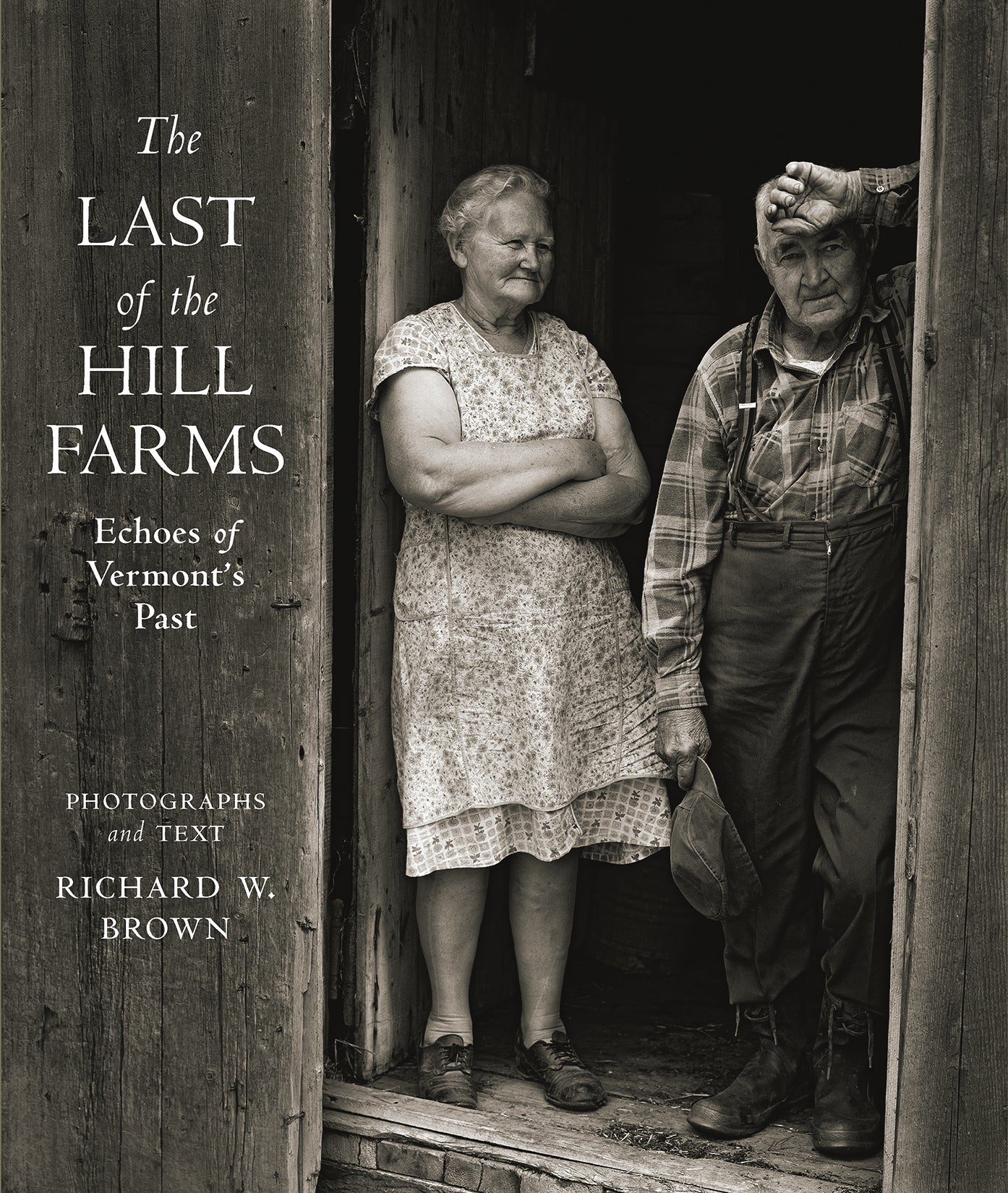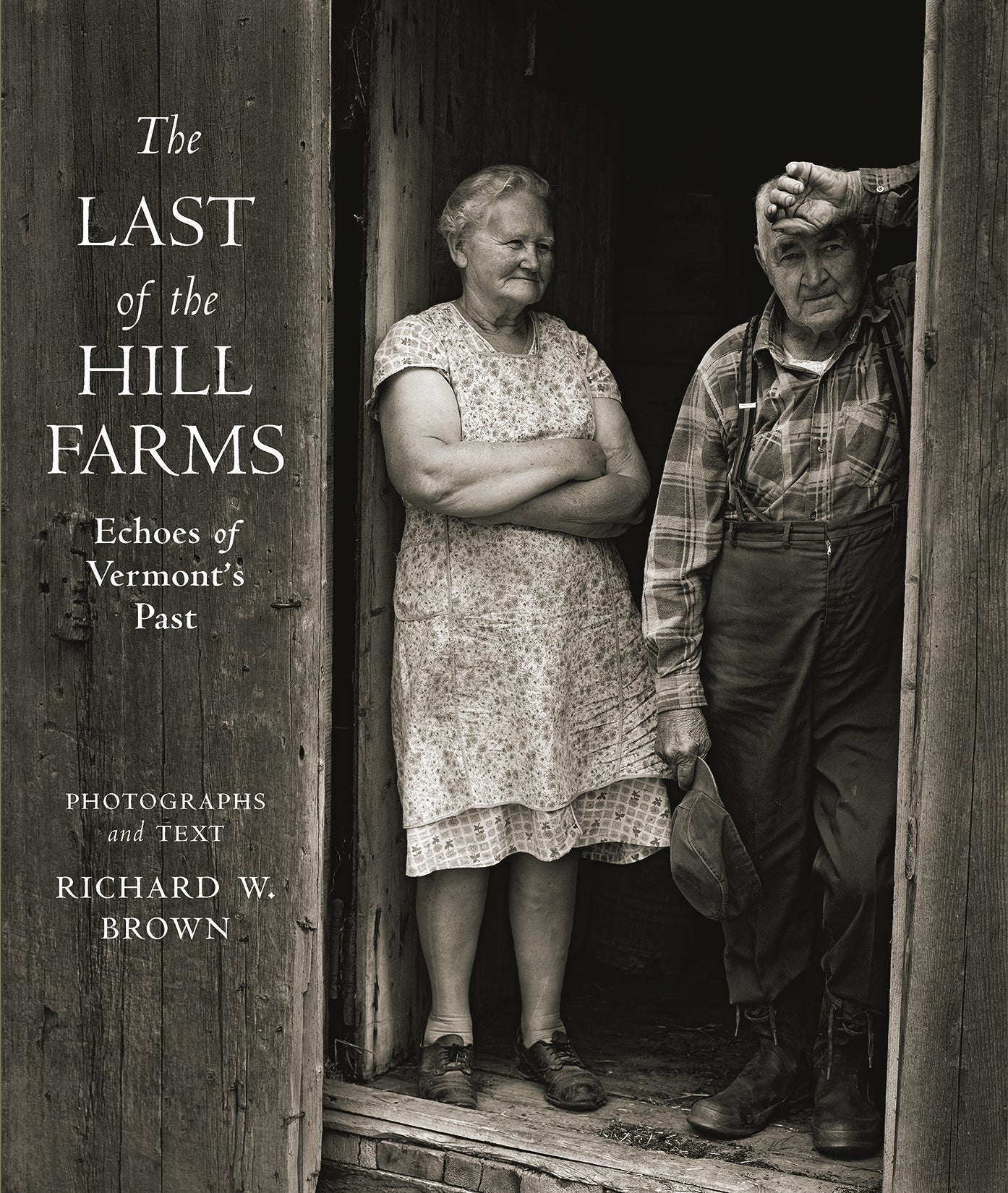
“A striking book....an arresting, wistful portrait of an all-but-gone way of life.”—Boston Globe
A celebration of a way of life, and the people who lived it, in rural Vermont’s Northeast Kingdom. In the early seventies, this was a land of sheep, cattle, work horses, wood-burning stoves, and outhouses—far removed in time and space from the industrial world.
In 1968 the photographer Richard Brown moved to the Northeast Kingdom, a remote corner of Vermont just barely entering the twentieth century. There he encountered a way of life—as it had been lived for generations—that was fast disappearing. A time when a farmer could make a living with a herd of thirty cows with a little sugaring or lumbering on the side.
Brown saw a pastoral vision where, “for the briefest interval, a window opened and the spirit of Vermont’s past―granite hills cleared and formed, hard lives lived and lost, struggle and endurance, a harsh land made starkly beautiful by nature and man―was made palpable.” He saw the land and also a people whose “endless hours of backbreaking, monotonous work were spent with a quiet ferocity” and who believed their “age-old labors were a struggle waged against time itself—labors that might just hold modernity at bay.”
Over the years that followed, Brown did record it, with an 8 x 10″ large plate view camera. Not only the hauntingly beautiful landscape but also the people—grave, strong, resolute—who stayed and worked the stubborn hills and “did so with great but fierce attachment.” The images still speak to our own need for attachment, simplicity, and the a connection to the land.
PRAISE FOR LAST OF THE HILL FARMS
“A striking book....an arresting, wistful portrait of an all-but-gone way of life.”—Boston Globe
“His is an important vision: much of Vermont is still beautiful, but we need to see and appreciate the ideal if we are to preserve it. [His] photography expresses that ideal superlatively well.”—Vermont Life
“In The Last of The Hill Farms, first impressions from these remarkable images give way to second, third and fourth appreciations, as all of the elements of Richard Brown’s rich compositions are caringly revealed. Vermont’s quilted patchwork of hard-scrabble Hill Farms, and the flinty Vermonters who scraped livings from them, are defining elements of Vermont’s heritage, deserving of this superb documentation. Carefully and skillfully setting fence stones and roof shingles one at a time, with weather-worn hands, these Vermonters helped forge our working economy and the fabric of our society, infused with the ethic and character of their New England persistence. They took pride in their land and what they achieved with it, and Richard Brown’s unforgettable images help us to take pride in them. All Vermonters can know their history is here. I value Richard Brown’s gift to us all.” —U.S. Senator Patrick Leahy
“Mr. Brown is my favorite upcountry artist with a camera. His photographs have such a crisp luminosity I think I would recognize them anywhere. Uniquely, he captures the quality of northern light, whether it’s the beatification of a curly Dorset sheep or the stunning blow of sunlight hammering the east face of a snowed-in farmhouse.” —Maxine Kumin, The New York Times Book Review

